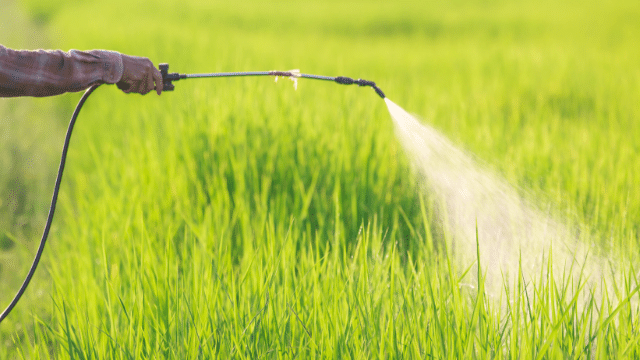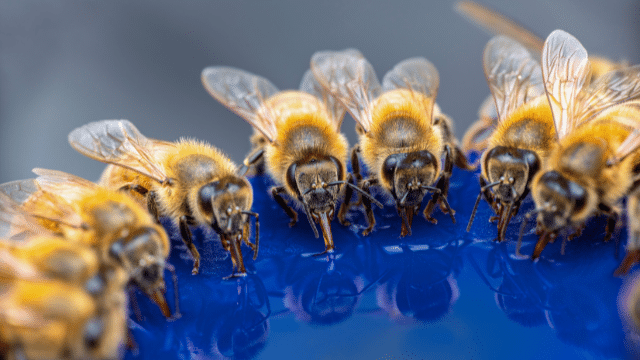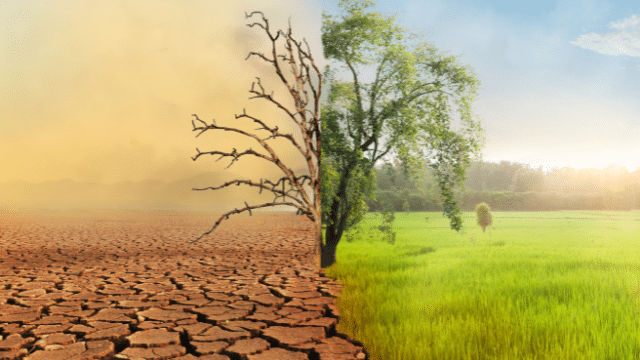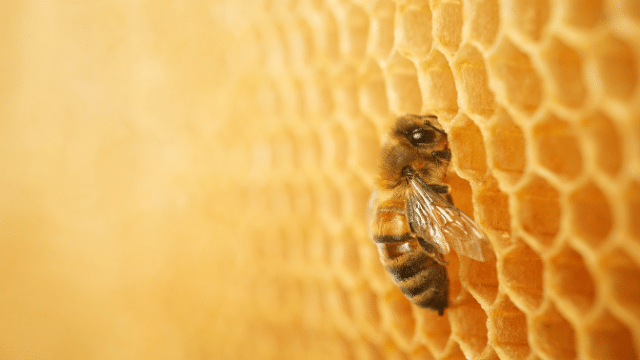Honey bees, the tireless pollinators, are vanishing at an alarming rate, raising concerns globally. These tiny creatures play a vital role in pollination, contributing to the growth of food crops and maintaining ecological balance. The disappearance of honey bees could have far-reaching consequences for food production and biodiversity. This article explores the importance of honey bees, unravels the mystery of their disappearance, and delves into the possible causes behind this phenomenon. The insights provided will shed light on a subject that affects us all and calls for immediate attention.
Contents
- 1 The Importance of Honey Bees
- 2 The Mystery of Disappearing Bees
- 3 Possible Causes – Pesticides
- 4 Possible Causes – Habitat Loss
- 5 Possible Causes – Climate Change
- 6 Possible Causes – Diseases and Parasites
- 7 Global Efforts to Understand the Phenomenon
- 8 Solutions and Mitigation Strategies
- 9 Case Studies – Success Stories
- 10 The Future of Honey Bees
- 11 A Call to Action for the Preservation of Honey Bees
The Importance of Honey Bees

Honey bees are not just honey producers; they are key pollinators for many of our food crops. Bees contribute to a diverse diet, from fruits and vegetables to nuts and seeds. Their pollination services are essential for the reproduction of over 85% of flowering plants, making them indispensable to our ecosystem. The economic value of bee pollination is estimated in billions, reflecting their significance in agriculture. Without honey bees, the food chain would be severely disrupted, leading to a scarcity of many essential foods.
Beyond agriculture, honey bees also contribute to the overall biodiversity of our environment. They pollinate wildflowers, supporting the growth of various plant species, which in turn provides habitats for other wildlife. The intricate relationship between bees, plants, and other animals creates a balanced ecosystem where each species thrives. The loss of honey bees would not only affect human food supply but also disrupt this delicate ecological balance, leading to unforeseen consequences for wildlife and the environment.
The Mystery of Disappearing Bees

The sudden and unexplained disappearance of honey bees, often referred to as Colony Collapse Disorder (CCD), has baffled scientists and beekeepers alike. Hives are found abandoned, with no dead bees in sight, and the queen and young bees are left behind. This phenomenon has been reported in various parts of the world, making it a global concern. The scale of the disappearance is alarming, with some regions reporting a decline of more than 50% in bee populations. The urgency to understand and address this issue has never been greater.
Several theories have been proposed to explain the disappearance of honey bees, but no single cause has been definitively identified. The complexity of the issue lies in the interplay of multiple factors, ranging from pesticides and habitat loss to diseases and climate change. Research is ongoing, and new insights are continually emerging, yet the mystery remains largely unsolved. The disappearance of honey bees is not just an ecological puzzle; it’s a pressing issue that demands a concerted effort from scientists, policymakers, farmers, and the general public.
Possible Causes – Pesticides

One of the most widely discussed causes of honey bee disappearance is the use of pesticides, particularly neonicotinoids. These chemicals are designed to protect crops from pests but have been found to have detrimental effects on non-target organisms like honey bees. Exposure to these pesticides can impair a bee’s ability to forage, navigate, and reproduce. Even sublethal doses can have a cumulative effect, weakening the colony over time. The widespread use of these chemicals in modern agriculture has led to growing concerns about their impact on bee populations.
The relationship between pesticides and bee decline is complex and not fully understood. While laboratory studies have shown negative effects on bees, field studies often present conflicting results. Some argue that real-world exposure levels are not high enough to cause significant harm, while others point to a synergistic effect where multiple pesticides combine to harm bees. The lack of clear guidelines on safe pesticide use and the absence of comprehensive monitoring makes it challenging to assess the true extent of the problem. However, the issue warrants careful examination and responsible management to ensure that our reliance on pesticides does not come at the expense of these vital pollinators.
Possible Causes – Habitat Loss

Habitat loss is another significant factor contributing to the decline of honey bees. Urbanization, intensive farming, and deforestation have led to the destruction of wildflower meadows and natural landscapes where bees forage and nest. Without access to diverse and abundant food sources, bees struggle to gather enough nourishment, leading to weaker colonies. The loss of nesting sites further exacerbates the problem, hindering the bees’ ability to reproduce and sustain their populations. The transformation of natural landscapes into monoculture fields and concrete jungles has left bees with fewer places to thrive.
Efforts to restore bee habitats are underway, but the challenge is immense. Planting wildflowers, creating bee-friendly gardens, and implementing sustainable farming practices can make a difference. However, the scale of habitat loss requires coordinated action from governments, communities, and individuals. Understanding the specific needs of different bee species and creating habitats that cater to those needs is essential. The fight to save the bees is not just about preserving a species; it’s about maintaining the intricate web of life that depends on them.
Possible Causes – Climate Change

Climate change, with its alterations in temperature and weather patterns, is also impacting honey bees. Unpredictable weather can disrupt the blooming patterns of plants, leading to a mismatch between the availability of flowers and the bees’ foraging schedules. Extreme weather events like droughts and storms can destroy food sources and nesting sites. The shifting climate zones may also force bees to migrate to new areas, where they may face competition from other species or lack suitable habitats. The multifaceted effects of climate change on bees are a growing concern that reflects a broader environmental challenge.
Addressing the impact of climate change on bees requires a holistic approach that considers the interconnectedness of ecosystems. Mitigating climate change itself is a complex task that goes beyond the scope of bee conservation. However, adaptive strategies, such as creating diverse and resilient habitats, monitoring bee populations, and supporting research, can help bees cope with the changing climate. The plight of the bees is a stark reminder of the broader ecological crisis and the urgent need for global action to protect our planet.
Possible Causes – Diseases and Parasites

Diseases and parasites are natural threats to honey bees but have become more prominent in the context of their decline. The Varroa mite, a parasite that feeds on bee larvae and adults, weakens bees and makes them more susceptible to viruses. Bacterial and fungal infections are common and can decimate entire colonies if left untreated. The spread of diseases is exacerbated by human practices, such as the transportation of bees for commercial pollination, which can introduce pathogens to new areas. The complex interplay between diseases, parasites, and human activities adds another layer to the bee decline puzzle.
Managing diseases and parasites in bee populations requires vigilance, knowledge, and collaboration. Beekeepers must be trained to recognize and treat infections, and regulations must be in place to prevent the spread of diseases across regions. Research into disease-resistant bee strains and effective treatments is ongoing and holds promise for the future. However, the battle against diseases and parasites is not isolated from other factors affecting bee health. A holistic approach that considers habitat, nutrition, and chemical exposure is essential for building resilient bee populations.
Global Efforts to Understand the Phenomenon

The decline of honey bees has not gone unnoticed, and global efforts are underway to understand and address the phenomenon. Governments, research institutions, and conservation organizations are collaborating to study the causes, monitor bee populations, and develop strategies to protect them. Initiatives such as the Global Honey Bee Health Coalition bring together stakeholders from various sectors to share knowledge and resources. Recognizing the problem at an international level has led to increased funding for research and implementation policies aimed at bee conservation.
Despite these efforts, challenges remain. The multifaceted nature of the problem requires solutions that consider the complex interactions between bees, the environment, agriculture, and human activities. There is no one-size-fits-all answer, and different regions may require tailored approaches. The success of global efforts depends on the continued collaboration between scientists, policymakers, farmers, beekeepers, and the public. The journey to save the honey bees is a testament to the interconnectedness of our world and the collective responsibility we hold to preserve it.
Solutions and Mitigation Strategies

Addressing the decline of honey bees requires a multifaceted approach that includes immediate actions and long-term strategies. On the immediate front, reducing the use of harmful pesticides, implementing bee-friendly farming practices, and restoring habitats can make a significant difference. Governments can enforce regulations that protect bees and incentivize sustainable practices. Collaboration between farmers, beekeepers, and conservationists can lead to innovative solutions that benefit both agriculture and bee populations.
Long-term strategies must focus on building resilience in bee populations and the ecosystems they inhabit. Investing in research to understand the complex interactions between bees, their environment, and human activities is vital. Education and community engagement can foster a culture of conservation that extends beyond bees to encompass broader environmental stewardship. The path to saving the bees is complex, but with concerted effort and a commitment to sustainability, it is a challenge that can be met.
Case Studies – Success Stories

Around the world, there are inspiring examples of communities, organizations, and individuals making a difference in the fight to save the honey bees. In urban areas, rooftop beekeeping and community gardens create habitats where bees can thrive. Farmers adopting organic and sustainable practices are seeing a resurgence of bee populations and improvements in soil health and crop yields. These success stories demonstrate that positive change is possible and within reach.
Scientific breakthroughs are also contributing to success in bee conservation. Research into disease-resistant bee strains, innovative hive management techniques, and effective treatments for parasites is yielding promising results. Collaborative efforts between researchers, policymakers, and practitioners are leading to policies and practices that are grounded in evidence and tailored to local needs. The successes, though varied and context-specific, share a common theme of innovation, collaboration, and a commitment to the well-being of both bees and the environment.
The Future of Honey Bees

The future of honey bees is uncertain but not without hope. The challenges are significant, and the stakes are high, but the global awareness and commitment to addressing the issue are growing. Technological advancements, scientific research, and a shift towards more sustainable practices pave the way for a future where bees can thrive. The lessons learned from both successes and failures provide valuable insights that can guide future efforts.
The fate of the honey bees is not an isolated issue; it is intertwined with broader environmental, social, and economic factors. The choices made today will shape the future not only for bees but for the entire ecosystem. A future that prioritizes sustainability values biodiversity, and recognizes the interconnectedness of all life forms is one where bees, and by extension, humanity, can flourish.
A Call to Action for the Preservation of Honey Bees
The disappearance of honey bees is a complex and urgent issue that calls for global attention and action. From understanding the multifaceted causes to implementing solutions and learning from success stories, the journey to save the bees reflects broader environmental challenges. The efforts to protect honey bees are not just about preserving a species; they are about safeguarding an ecosystem that sustains life on Earth. The collective responsibility to act is clear, and the time to do so is now.


